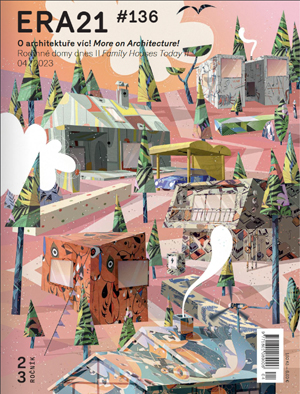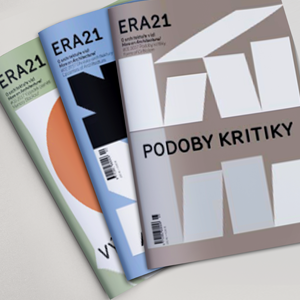There is a small house in the village of Všetaty, Central Bohemia, which Jan Palach left one January morning in 1969 and never came back. Last year, the house was opened to the public as part of a memorial to commemorate the legacy of Palach’s sacrifice. The memorial consists of the transformed house, penetrated from one side by a sharp steel prism which holds the entrance, a meditative back garden with a bench and a group of trees, and a separate single-story building housing a museum. The scheme is the winner of the architectural & art competition organized by the National Museum in 2015–2016.
» entire articleThis issue of ERA21 solely focuses on architectural competitions, once again, and comes out exactly seven years after our first issue on this topic, in 2013. Public awareness of what architectural competitions are and why they exist has grown slowly but surely during this period, thanks to the efforts of enlightened local politicians, civic associations, city architects, the Czech Chamber of Architects, as well as many journalists and advocates of architecture. Some architects are becoming professional organizers. Municipal institutes and offices with departments dealing specifically with competitions have also cropped up in Prague, Brno, or Ostrava. These are all reasons for why the number of competitions continues to grow.
Granted, this positive trend is tied to the recent construction boom. Globally speaking, design contests remain an entirely marginal way of selecting a contractor, not helped by the fact that systematic state support is largely nonexistent. The full potential of architectural competitions is far from being exploited. If we want them to be more than an extraordinary event, to become a standard procedure, we need to increase effectiveness and minimize risks for both clients and participants. A better proportion of different types of limited competitions, as opposed to traditional open competitions, could help for the smallest as well as the largest commissions. We can find inspiration in countries with a long-term tradition of architectural competitions.
But a higher number of contests says nothing about their eventual success. The goal, after all, isn't pretty pictures, but ideally a finished building. It’s positive that this happens more and more often, too. The grand opening often becomes a social event for the village or town. And surely there is no better way to promote architectural competitions than a successfully completed building.
In the last four years, the warehouse area in the Czech Republic has doubled. Czechia’s strategic position as almost one of the richest regions in Europe, together with lower prices for land, lower building costs, an affordable and less socially protected labor force, stable but weak state regulation, make for ideal conditions for the construction of new logistics centers. On top of the well-known saying: “Czechia – Europe’s assembly shop”, we can now call our country Europe’s transshipment point, too...
» entire article
“We believe this will not be a short-term activity,” wrote Rostislav Koryčánek, then editor-in-chief, in his first ERA21 editorial in 2002. Being published in Brno, in the beginning it looked as though the periodical, focused chiefly on ecology and construction, would only have local reach. ERA21 now celebrates its 20th birthday, still bringing important information from the world of architecture, putting it in a wider context, and influencing the architectural discourse in Czechia. To discuss the evolution of the magazine, all four of the former editors‑in‑chief – Helena Šnajdarová, Rostislav Koryčánek, Osamu Okamura and Zuzana Morávková – met with the current editor‑in‑chief Filip Landa in Brno. The final agreement was reassuring: it certainly has not been a short-term activity.
» entire articleAs of today, the new elementary school fits in the existing development of the Psáry and Dolní Jirčany municipalities only loosely. The site is situated next to the main road to Prague, the west-facing windows offer views to the surrounding fields, the public space in front of the main entrance marks the end of an urban axis connecting it with the Dolní Jirčany square. The two main wings, inspired by village farmhouses, contain classrooms and offices; the central block-shaped volume clad with wooden slats houses the canteen and the gyms. Classrooms are organized in clusters of three or four; each cluster with its own color and direct access to an outdoor area. The energy efficient building also has its own rainwater collection system.
» entire article

ERA21 vydává ERA Média, s. r. o. |
|
|
Phone: +420 530 500 801 E-mail: redakce@era21.cz |
|
| WEBdesign Kangaroo group, a.s. |